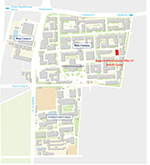Seminar index
128th Hakubi Seminar
Control of primate’s decision-making and functional identification of the brain circuitry
- Speaker:Ken-ichi Amemori(The Hakubi Center for Advanced Research)
- Date:9th May 2017 (Tuesday), 16:30-
- Venue:The Hakubi Center for Advanced Research (Research Administration Building 1F)
- Presentation Language:English(This seminar is open for students and researchers at Kyoto Univ.)
Summary
Primate brain is surprisingly complex, and functions as a parallel and distributed system. Because of functional differences in the distributed system, manipulation of the local circuit has been a tool to identify the local function of each region. Further, to analyze the states and variables of an internal processing of decision-making, computational and econometrics modeling have been used to find out neural correlates with the choice behavior. With these manipulation and computational methods, I aim to understand the mechanism of psychiatric disorders, including anxiety and mood disorders. For this purpose, we focused on the “approach-avoidance conflict” paradigm that can quantitatively characterize the feature of anxiety and depression. In our daily life, many of our decisions involve weighting benefit against cost. For instance, if we need to receive both reward and punishment after we accept one option, the decision to accept it or not involves approach-avoidance conflict. We trained macaque monkeys to perform choices between acceptance and rejection of the combination of reward and punishment. With their pattern of their choices, we computationally estimated the degree of pessimism of the monkeys. Further, to test for causal evidence of the function of the cingulate cortex and caudate nucleus, we microstimuated them to examine the influence on decision. Interestingly, we found that the effect of the microstimulation could be mainly explained by the adaptive change in the degree of pessimism that we derived. In anxiety disorder, it was reported that the patients tend to make pessimistic decision by paying more attention to punishment. These results suggest that an abnormal activity of the primate cingulate cortex and caudate nucleus may make the monkey temporarily anxious.









